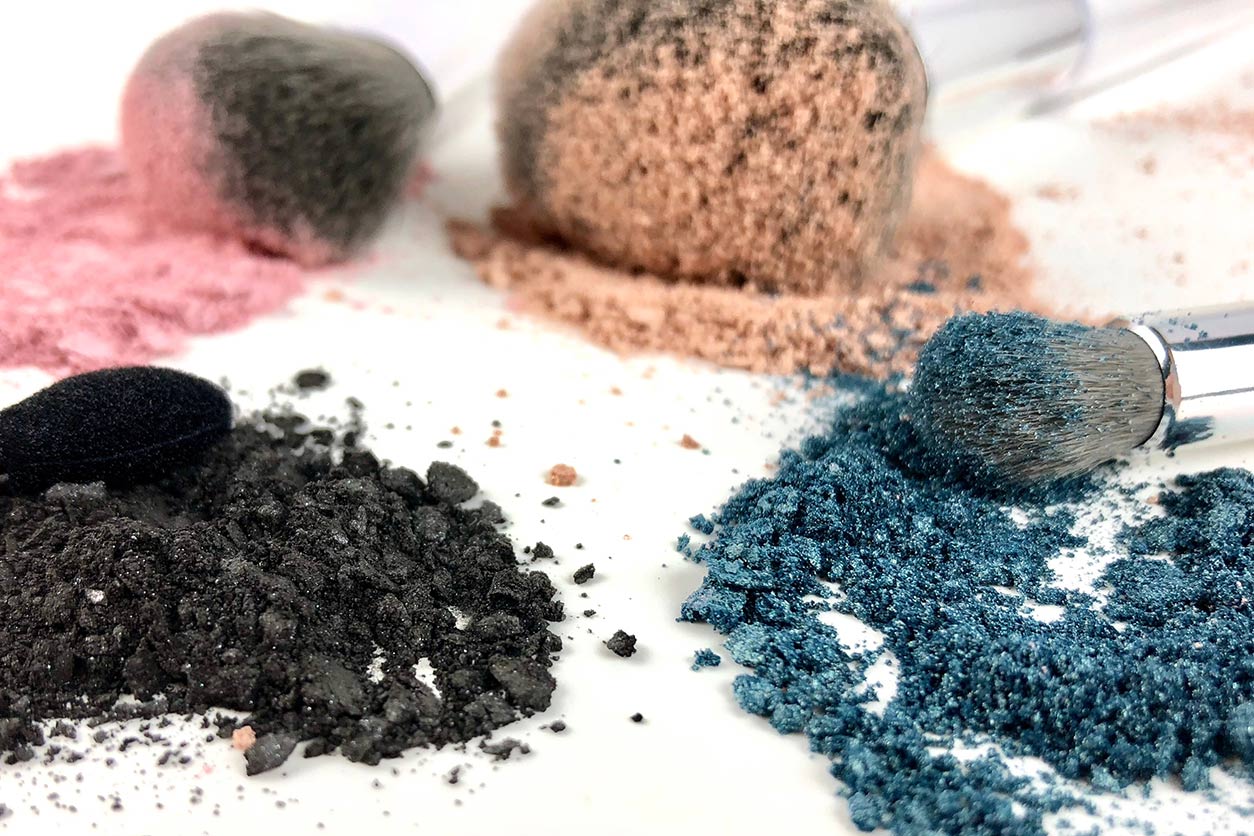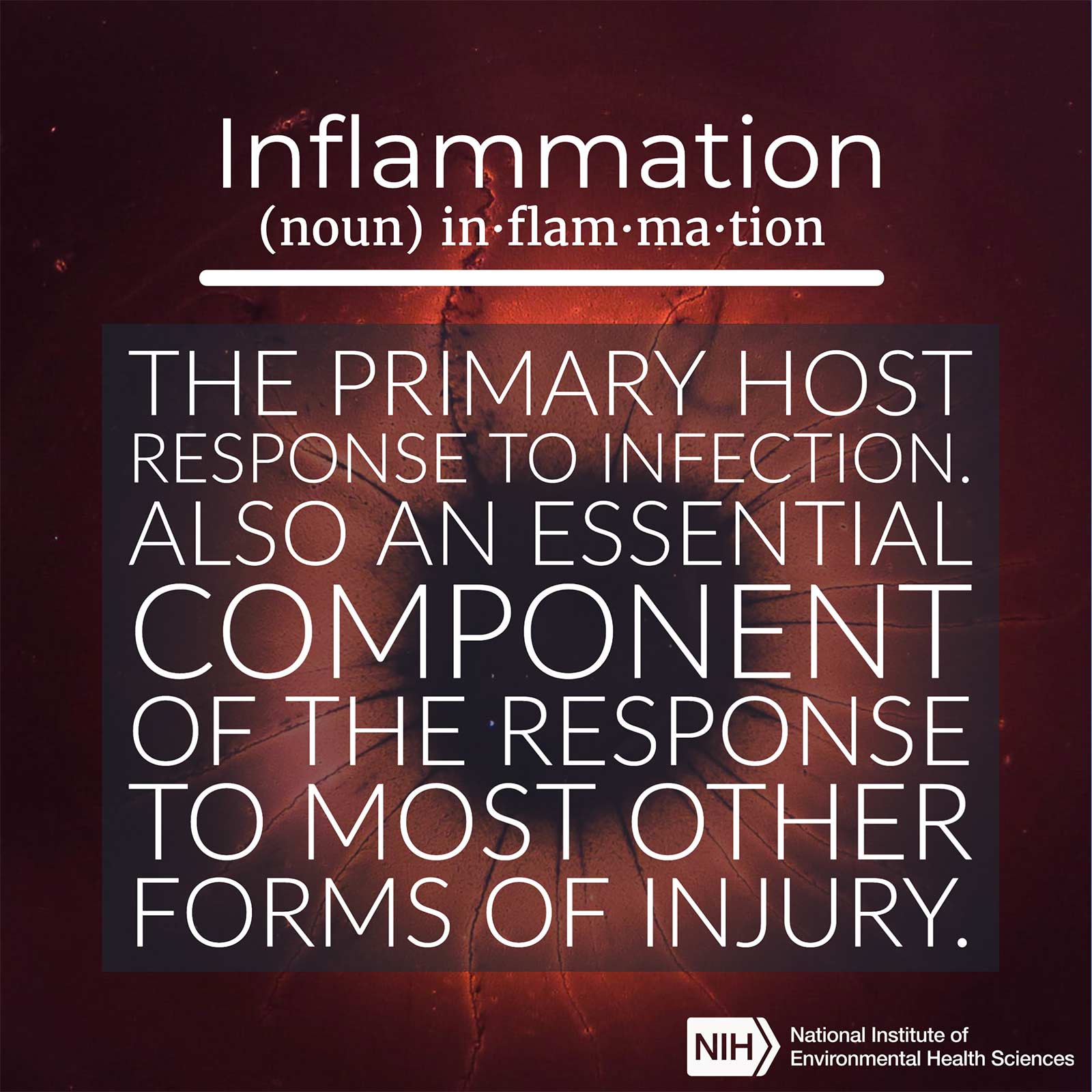The U.S. Food and Drug Administration (FDA) hosted a public meeting Feb. 4 to hear comments about improving test methods for detecting asbestos and similar minerals in cosmetic products that contain talc. NIEHS Toxicology Liaison Christopher Weis, Ph.D., discussed basic aspects of fiber exposure and toxicity, to set the stage for discussions later in the day. The meeting was held at the FDA White Oak Campus in Maryland.
 Talc is used in powders, eye shadows, blush, and other cosmetics to absorb moisture, to prevent caking, to make facial makeup opaque, or to improve the feel of a product.
Talc is used in powders, eye shadows, blush, and other cosmetics to absorb moisture, to prevent caking, to make facial makeup opaque, or to improve the feel of a product.Members of the public also presented comments. “The meeting was attended by about 140 people representing health advocacy groups, individuals harmed by products, industry interests, law firms, health agencies, laboratories, etc.,” said NIEHS Senior Medical Advisor Aubrey Miller, M.D., who joined Weis at the meeting. The event was live broadcast to many more, who registered to attend the meeting remotely.
Recommendations follow recalls
 “We must fully characterize EMP exposure to understand the full spectrum of health implications,” said Weis, on potential tests for whether asbestos occurs in cosmetics and personal care products. (Photo courtesy of Steve McCaw)
“We must fully characterize EMP exposure to understand the full spectrum of health implications,” said Weis, on potential tests for whether asbestos occurs in cosmetics and personal care products. (Photo courtesy of Steve McCaw)The objective of the meeting was to present a set of preliminary recommendations for definitions, specific research needs, and development of more accurate, standardized, and relevant test methods to identify hazardous mineral fibers in cosmetic products. The recommendations were developed by the Interagency Working Group on Asbestos in Consumer Products, on which Weis and Miller represent NIEHS.
National Toxicology Program (NTP) toxicologists Scott Masten, Ph.D., and Matt Stout, Ph.D., also participated in the group. Masten directs the NTP Office of Nomination and Selection.
Asbestos and other elongate mineral particles, or EMPs (see sidebar), can cause cancers and a variety of noncancer health effects, Weis explained. In response to EMP exposure, the body initiates inflammatory responses related to the particles’ physical and chemical characteristics.
On Oct. 18, 2019, FDA issued an alert regarding talc-based baby powder that was voluntarily recalled due to asbestos contamination. That recall and several others followed a March 5 advisory that consumers avoid use of specific talc-containing cosmetic products.
Risk due to shape, not DNA damage
The working group’s recommendations addressed both asbestos and other EMPs. Weis said that all EMPs that remain in the body have the ability to initiate inflammation, so all such EMPs should be included in laboratory analyses. As defined in the group's recommendations, “An EMP encompasses both asbestiform and non-asbestiform particles that are biopersistent and have characteristics that enable them to be respirable.”
“Related minerals with similar shape may be less well-known, but the body responds with the same inflammatory processes,” Weis noted. When these particles are inhaled, the alveoli and terminal bronchioles, which are both found deep within the lungs, are the most susceptible parts of the body.
Macrophage cells, a type of white blood cell present in the lower areas of the lung, surround and remove foreign particulates that we breathe. But macrophages are not able to efficiently remove inhaled EMPs. When this happens, the so-called frustrated macrophage releases molecules called cytokines, along with other substances, that signal distress.
“These cytokines initiate an adverse outcome pathway that begins the process of inflammation and disease progression,” Weis said. “All biopersistent EMPs have the potential to initiate this inflammatory cascade of events.”
Citation: Ji Z, Wang X, Zhang H, Lin S, Meng H, Sun B, George S, Xia T, Nel AE, Zink JI. 2012. Designed synthesis of CeO2 nanorods and nanowires for studying toxicological effects of high aspect ratio nanomaterials. ACS Nano 6(6):5366–5380.

To study the body’s responses to tiny particles NIEHS-funded researchers used a cell line with macrophage-like properties and nanorods of different sizes and shapes. These scanning electron micrographs show cells exposed to shorter nanorods and longer nanowires. The team reported that the cells maintained a healthy appearance when exposed to shorter nanorods (Figure 6a). The medium and longer nanowires came into contact with the cellular surface and even pierced the surface membrane (Figure 6b,c), in a manner similar to macrophages confronted with EMPs, resulting in what Weis called frustrated macrophages. (Image adapted with permission from Ji, Wang, Zhang, et al. Designed synthesis of CeO2 nanorods and nanowires for studying toxicological effects of high aspect ratio nanomaterials. ACS Nano 6(6):5366–5380. Copyright 2012. American Chemical Society.)










